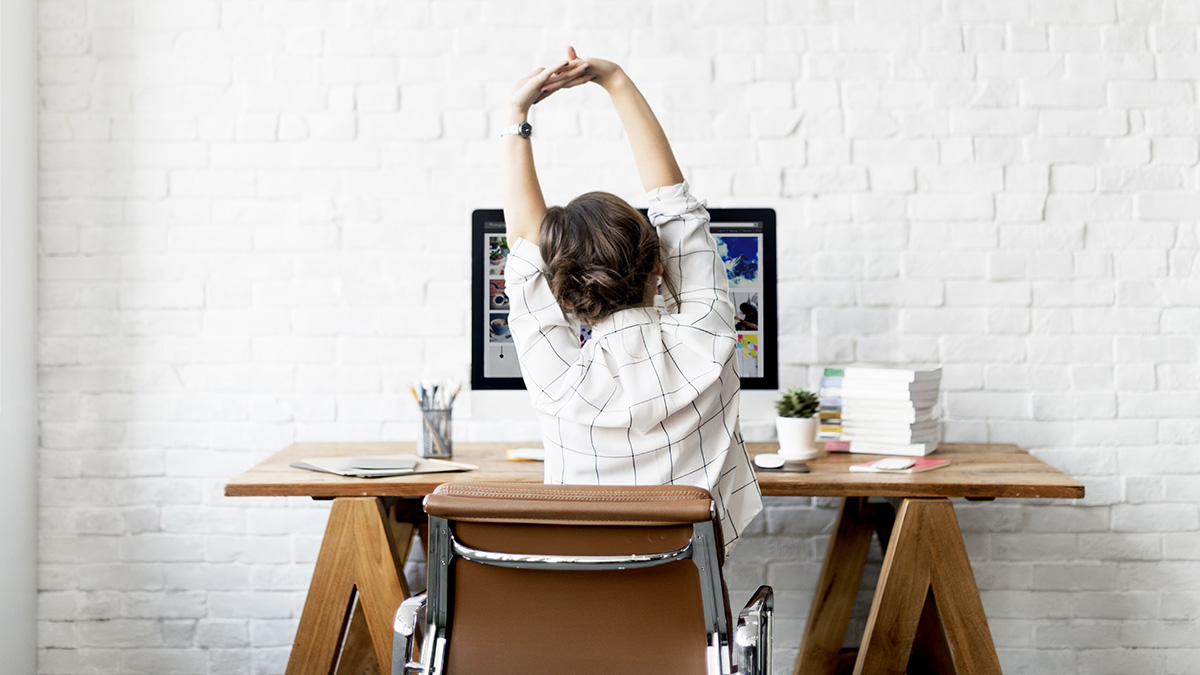Do you spend hours sitting at your office desk every day? If you’re not paying attention to your posture and stretching regularly, you might be putting your health and well-being at risk. Poor sitting posture can lead to various problems, such as neck and back pain, muscle stiffness, decreased mobility, and poor balance. It can also affect your appearance and self-esteem, making you look slouched and tired.
Contents
Why Does Posture Matter in a Sedentary Lifestyle?
A sedentary lifestyle has been linked to a laundry list of health concerns, from obesity and osteoporosis to hypertension and cardiovascular diseases. One of the most immediate effects is poor posture.
Poor posture can have many adverse effects on your health and well-being. A common issue is the dreaded “Syndrome Carpal Tunnel,” which occurs when the median nerve is compressed as it travels through the wrist. Have you ever experienced numbness or tingling in your hand or wrist while sitting at your computer? Yep, that’s it. Poor posture can also lead to a stiff neck, lower back pain, arthritis, and headaches.
Find Your Sitting Sweet Spot
To avoid these and other possible problems, you should first try to improve your working conditions such as:
Chair and Desk Height: Ensure your chair and desk are at a height where your feet rest flat on the ground. Your knees should be roughly at hip level. This will reduce the pressure on your lower back and legs.
Ergonomic Chair: If you can, invest in an ergonomic chair that provides lumbar support and promotes healthy posture.
Screen Position: Your computer screen should be at eye level, and your arms should form a 90-degree angle while typing. No more craning your neck downward or reaching up for the keyboard!
Stretch Breaks – Your Body’s Best Friend
Now that you’ve set up your workspace let’s talk about the importance of stretch breaks. Your body needs movement to thrive, especially in a sedentary job.
Stretches at the desk: Quick exercises such as simple neck stretches, shoulder rolls and wrist flexes can prevent stiffness and discomfort.
Walk it Out: Every hour, take a short walk. It doesn’t have to be a marathon—just a lap around the office or your living room. This gets your blood flowing and re-energizes your mind.
Upper Back Stretch: If you’re chained to your keyboard, show your upper back some love. Interlock your fingers and stretch your arms forward, rounding your upper back. Hold for 10 seconds.
Creating a Stretch Routine
Morning Wake-up: Start your day with a morning stretch routine. Ten 10 minutes of yoga or basic stretches a day can increase flexibility, reduce back pain, and energize you for the day ahead.
Midday Revive: When the afternoon slump hits, resist reaching for another coffee. Instead, stand up, stretch, and even sneak in a quick walk.
Evening Unwind: Finish your workday with a final stretch session. Focus on areas that feel tense, like your shoulders and lower back. Stretching can help you transition from work mode to relaxation mode.
Stay Hydrated
Your spine needs water just as the rest of your body does. Discs in our spines are filled with water – if there is not enough water in the discs, they cannot cushion the bones properly, leading to spinal problems. Dehydration can also make you feel sluggish, affecting your posture and productivity. Water or herbal tea instead of endless cups of coffee is always a good option.
Helpful Tools and Accessories
Besides setting up an ergonomic workstation, maintaining a good posture, stretching, and moving regularly, you can also use some helpful tools to avoid back pain and other health problems from sitting at a desk. These include:
- A lumbar support pillow: This cushion fits behind your lower back and supports the natural curve of your spine. It can help prevent or reduce lower back pain by keeping you from slouching or leaning forward in your chair.
- A seat cushion: This pad goes on top of your chair seat and provides extra comfort and cushioning for your hips and buttocks. It can help you prevent or reduce hip pain and pressure ulcers by distributing your body weight evenly and reducing friction on your skin.
- A footrest: This platform goes under your desk and supports your feet and legs. It can help prevent or reduce leg pain and swelling by improving blood circulation and keeping your knees at a right angle.
- A keyboard tray: This sliding shelf holds your keyboard and mouse under your desk. It can help you prevent or reduce wrist and arm pain by allowing you to adjust the height and angle of your keyboard and mouse to suit your preferences.
- A monitor stand: This device raises your monitor to the optimal height and distance for your eyes. It can help you prevent or reduce eye strain and headaches by reducing glare, reflections, and squinting.
- A headset: This device allows you to talk on the phone hands-free. It can help prevent or reduce neck and shoulder pain by avoiding cradling the phone between your ear and shoulder.
These tools and accessories are not essential, but they can make a big difference in your comfort and health while working at a desk. You can find them online or in office supply stores at various prices and quality levels.
Sedentary posture can have many adverse effects on your health and well-being, such as back pain, headaches, low energy, poor mood, and low self-esteem. To avoid these, you should practice good posture by adjusting your desk setup, moving around frequently, and doing exercises to strengthen and stretch your postural muscles. By doing so, you will get the benefits of correct posture, such as increased confidence, easier breathing, better mood, and reduced risk of injury. Remember, posture is not just about how you look but also how you feel.
If you have any tips and experiences that could contribute to a healthier, more comfortable workspace, let us know in the comments below.





















مبيملر نيات نةل